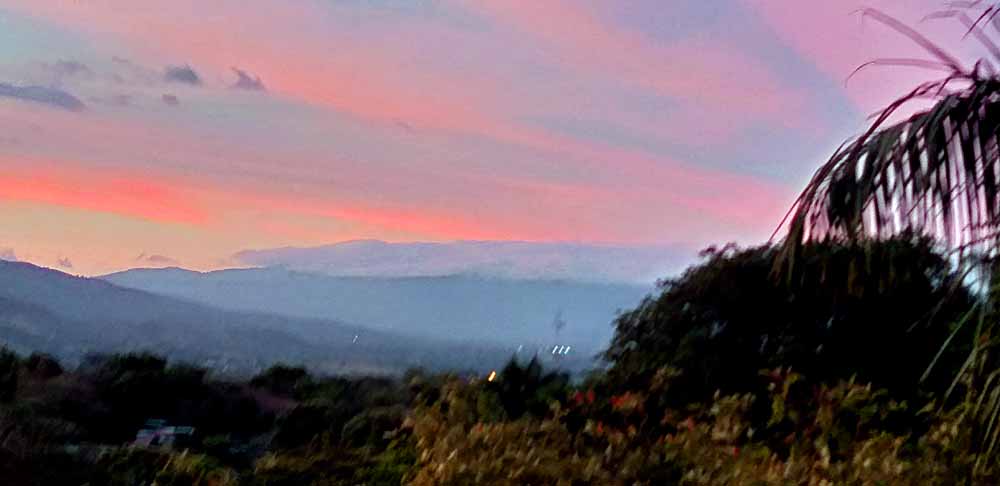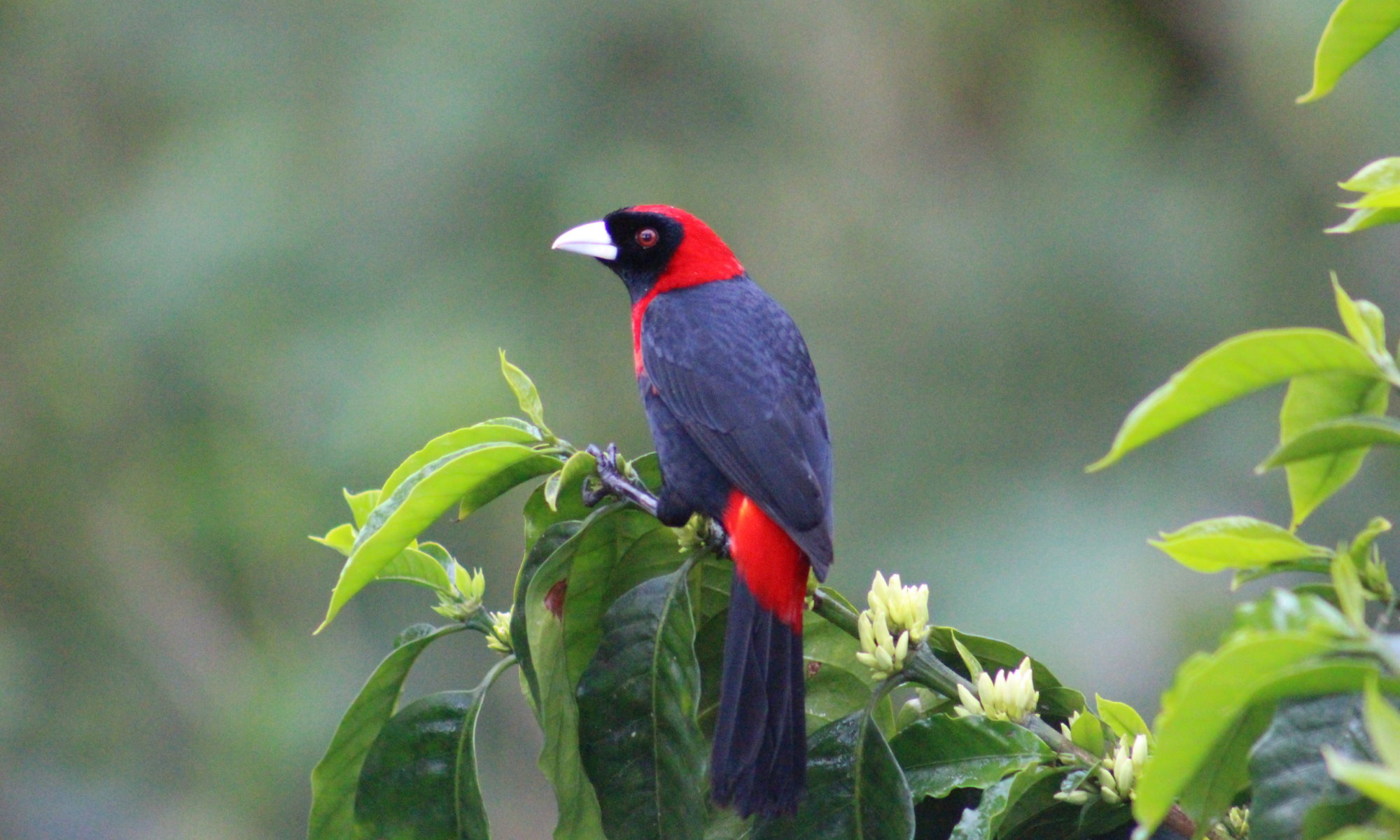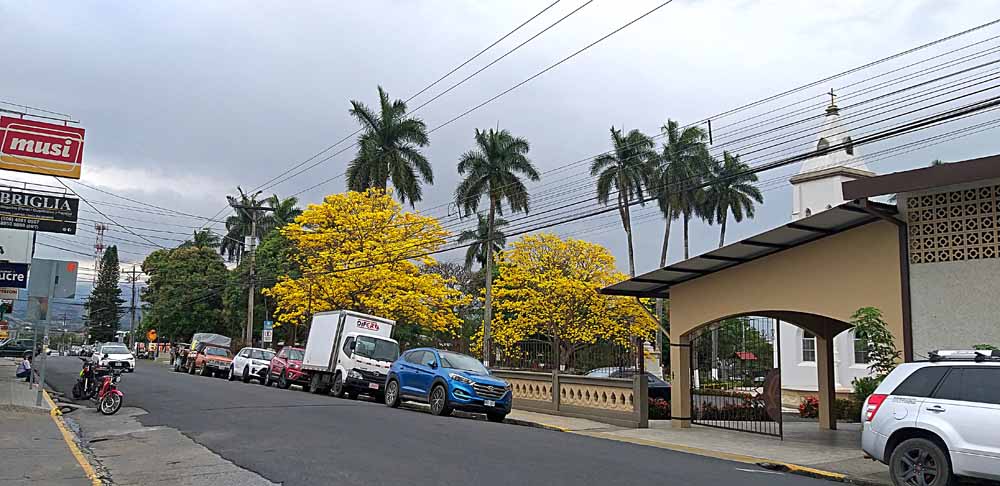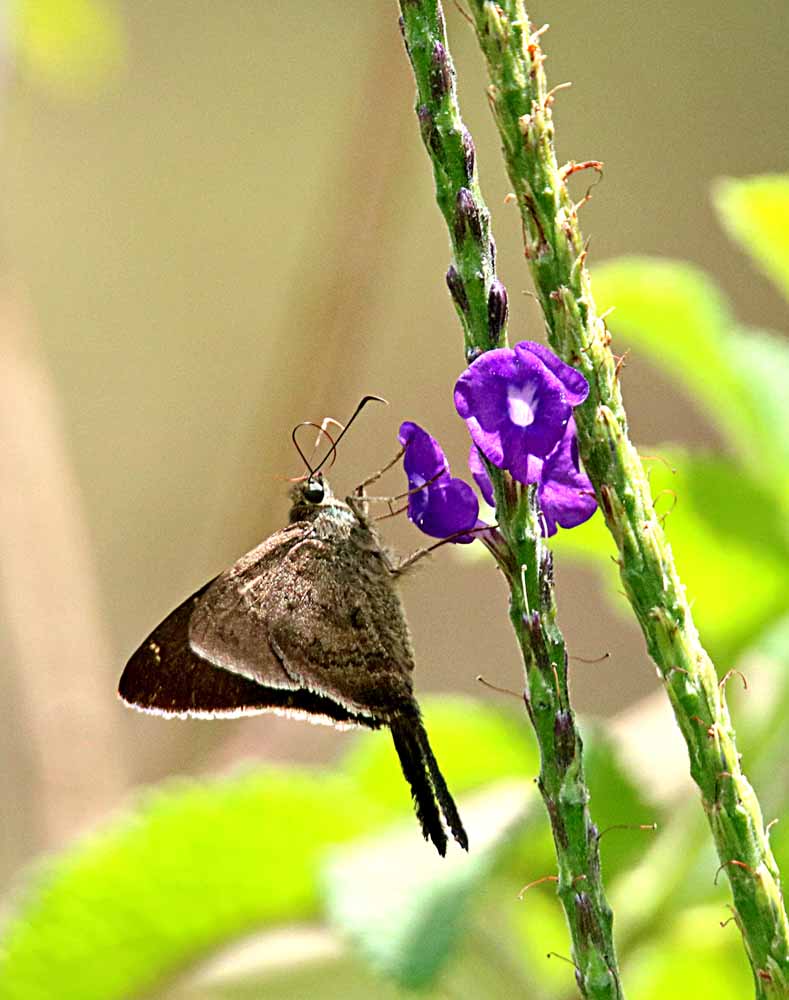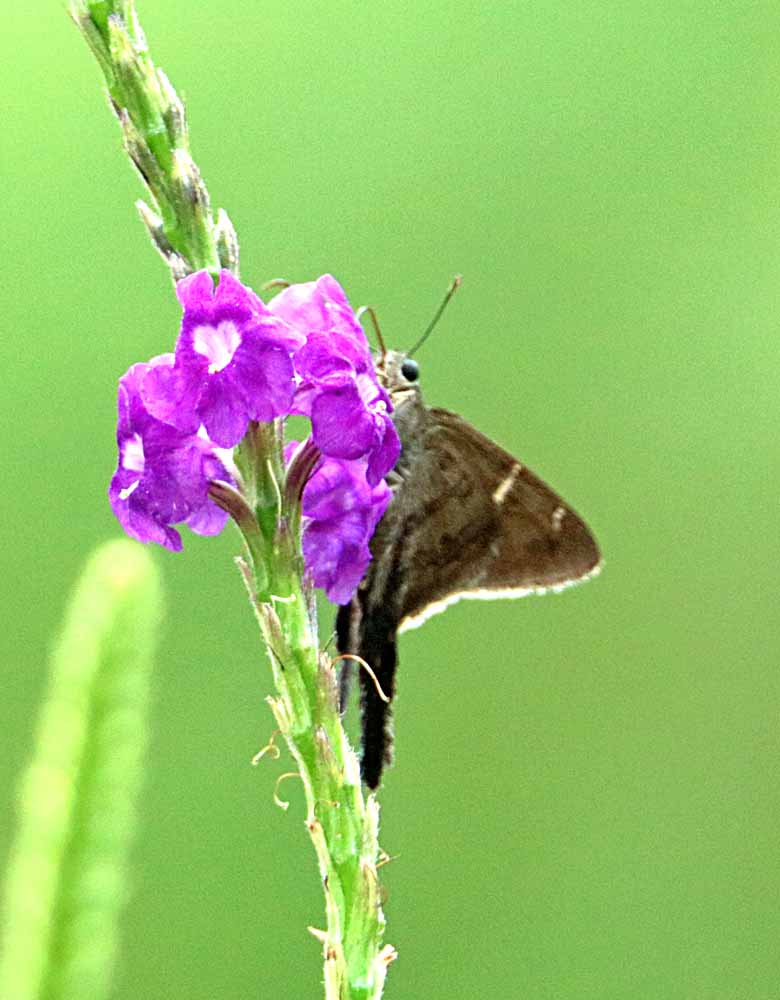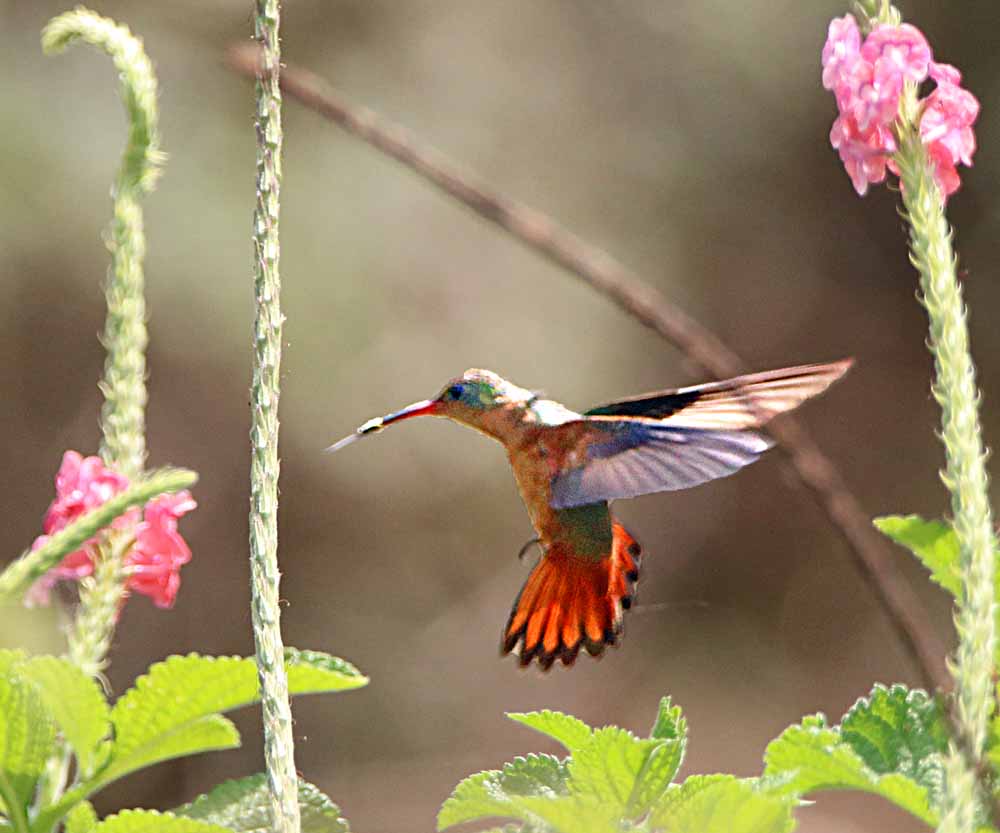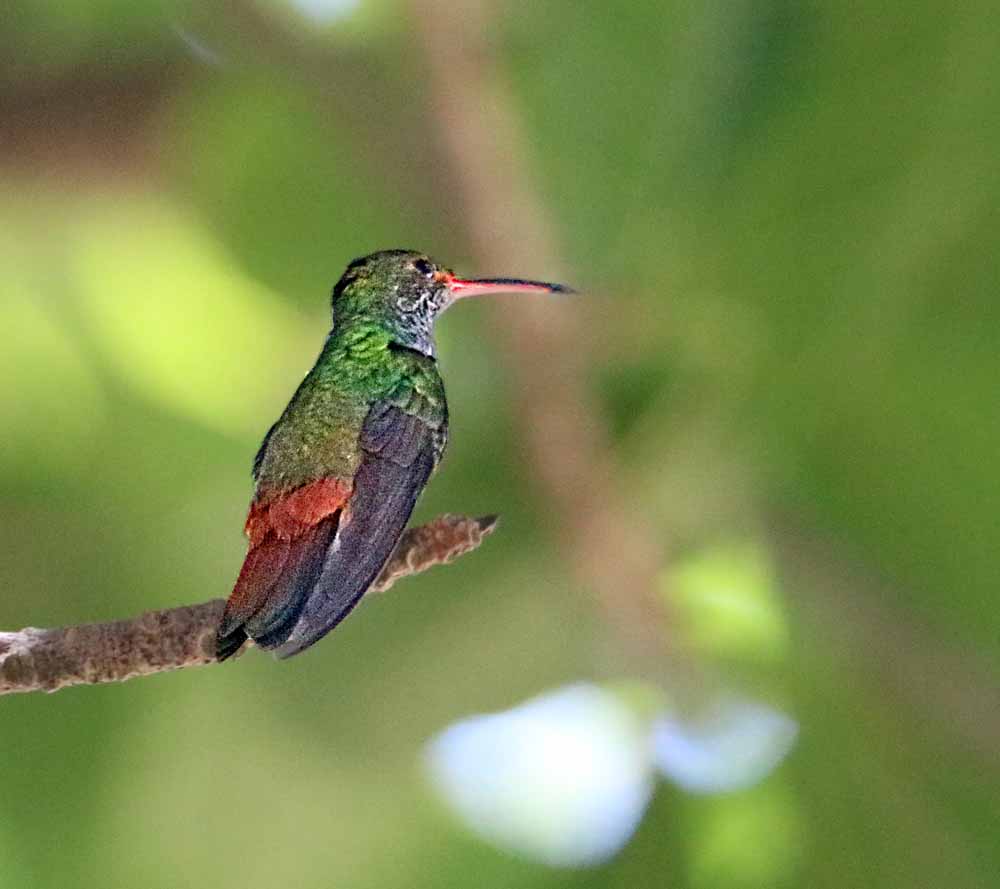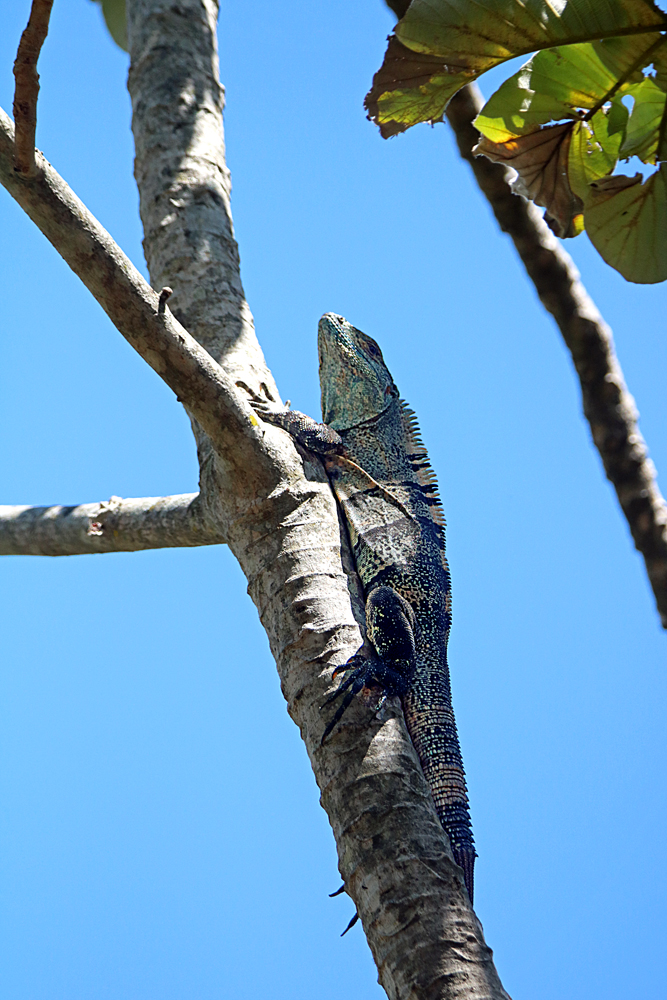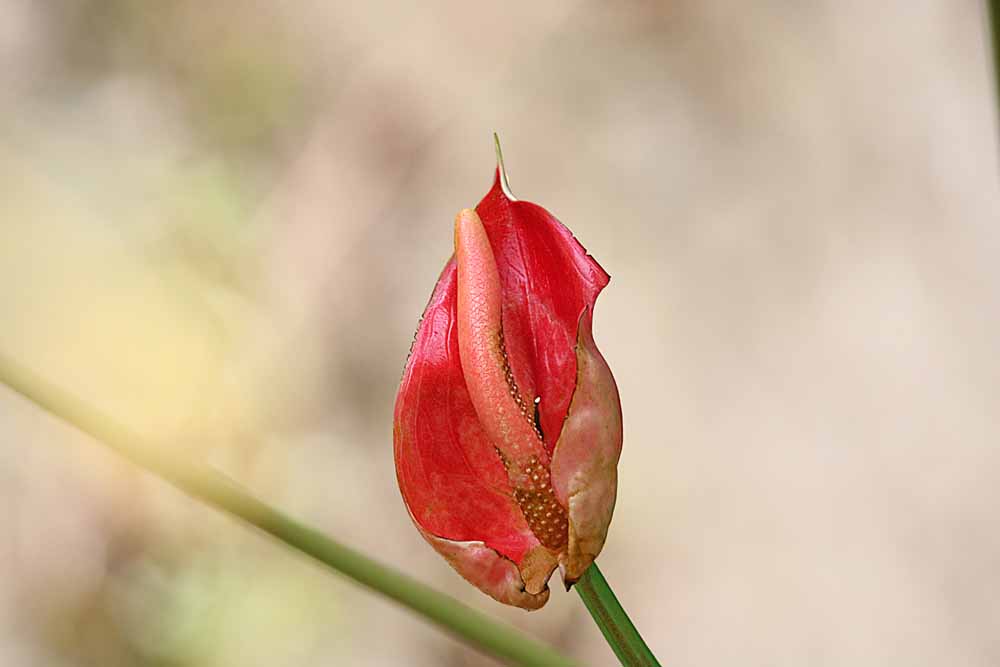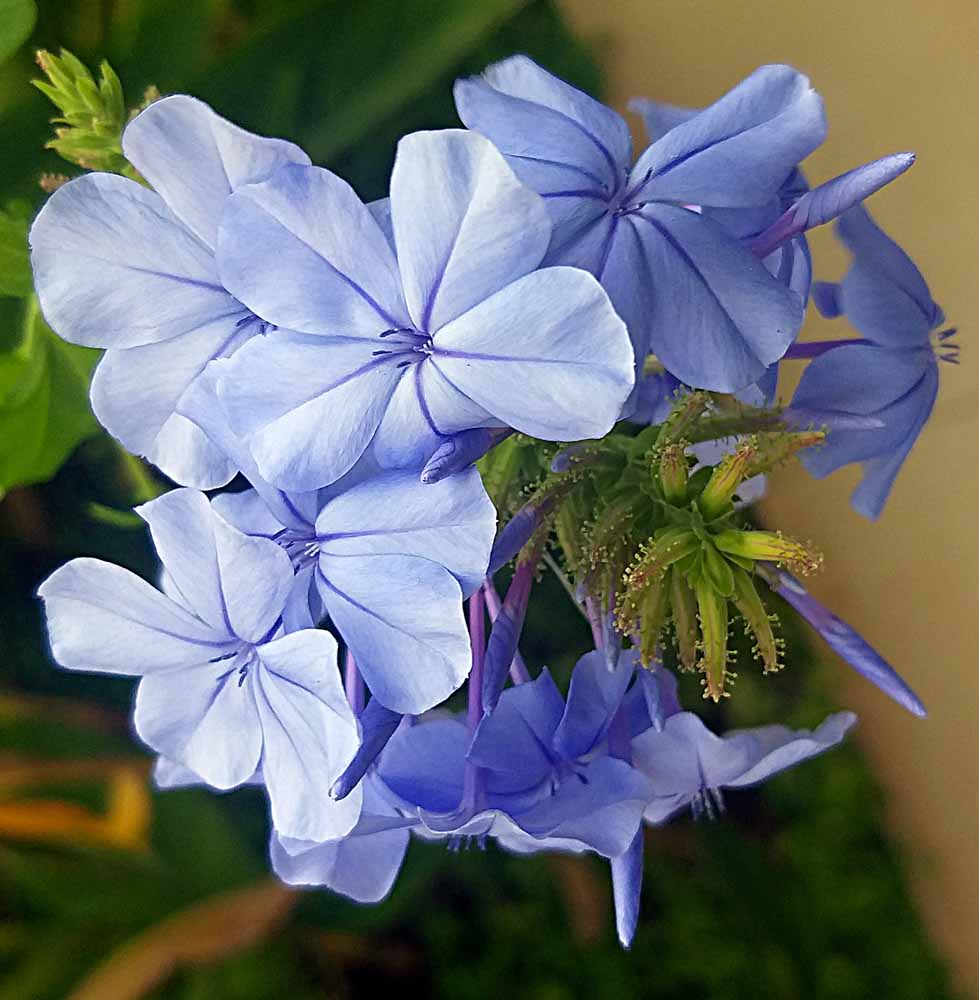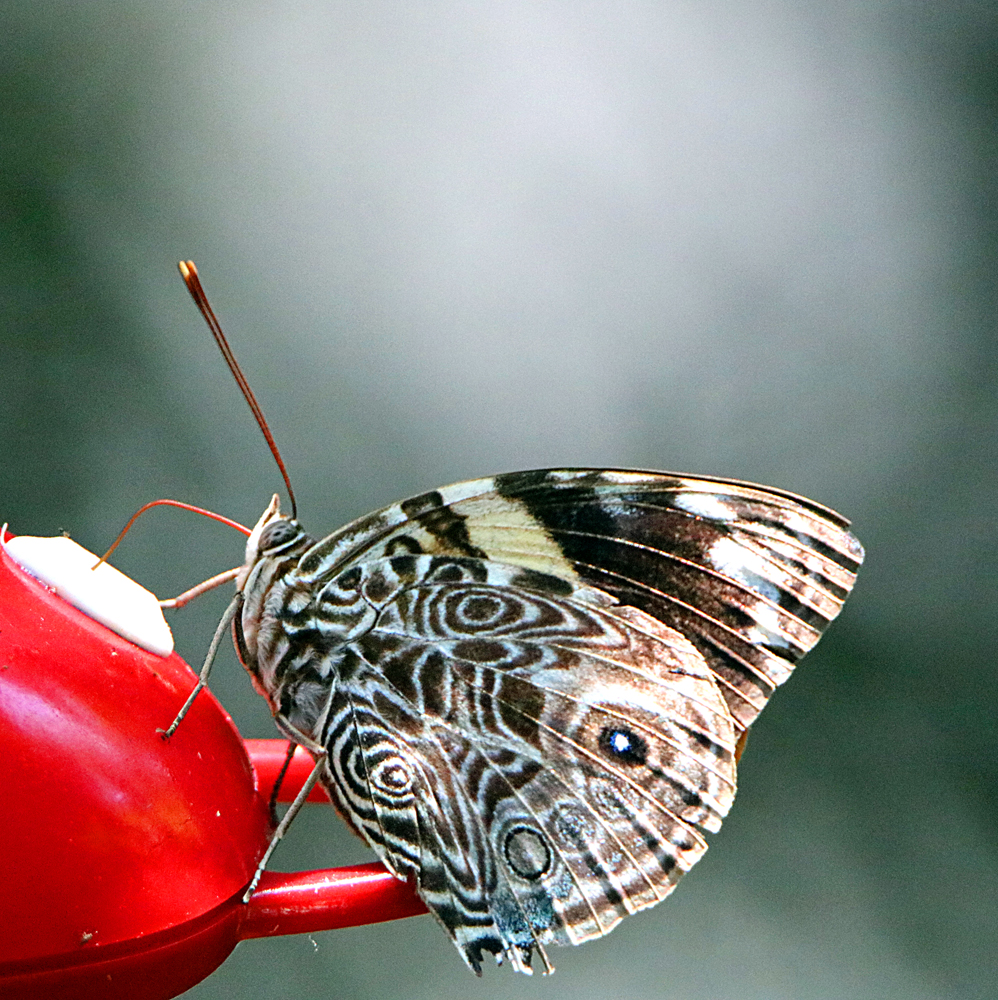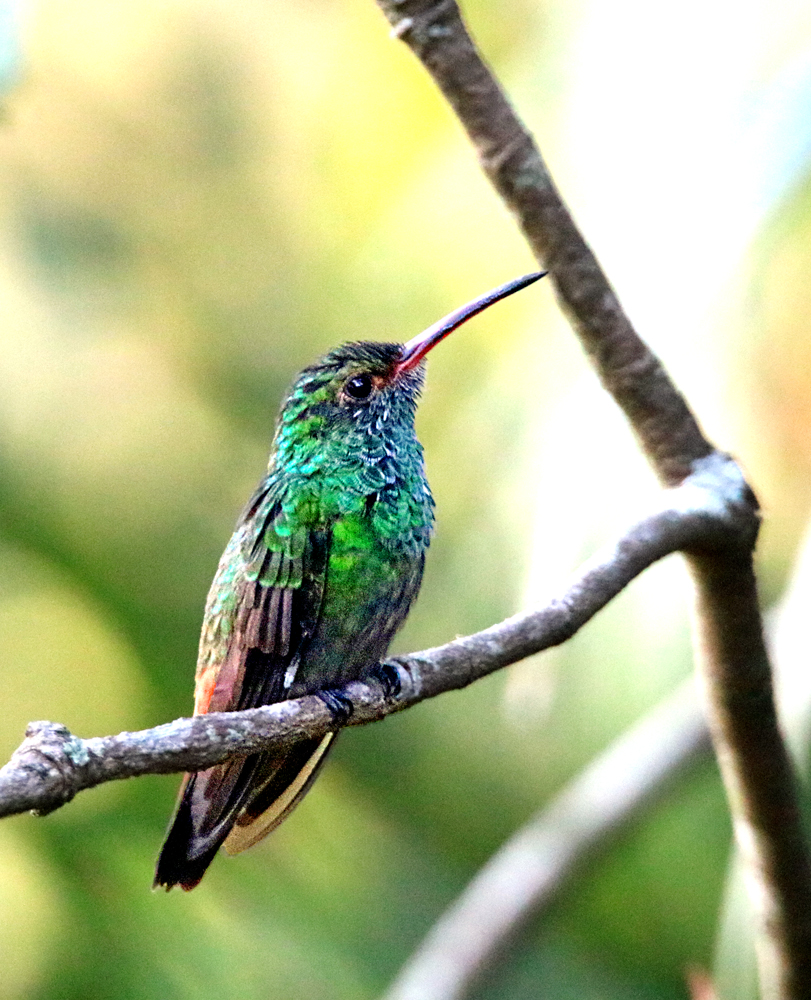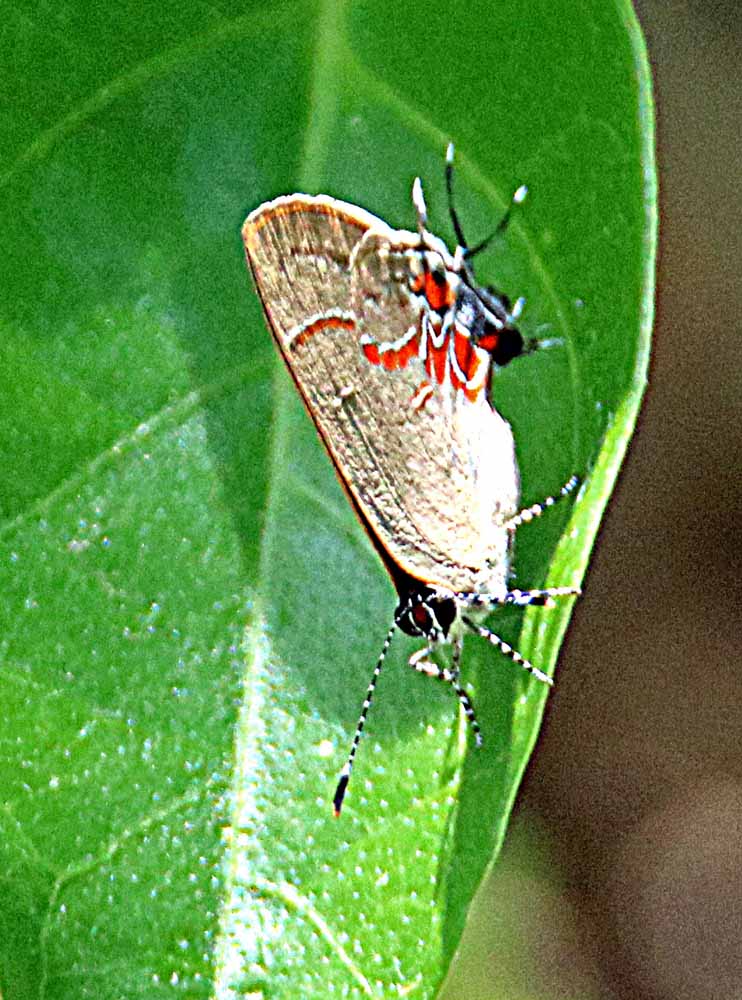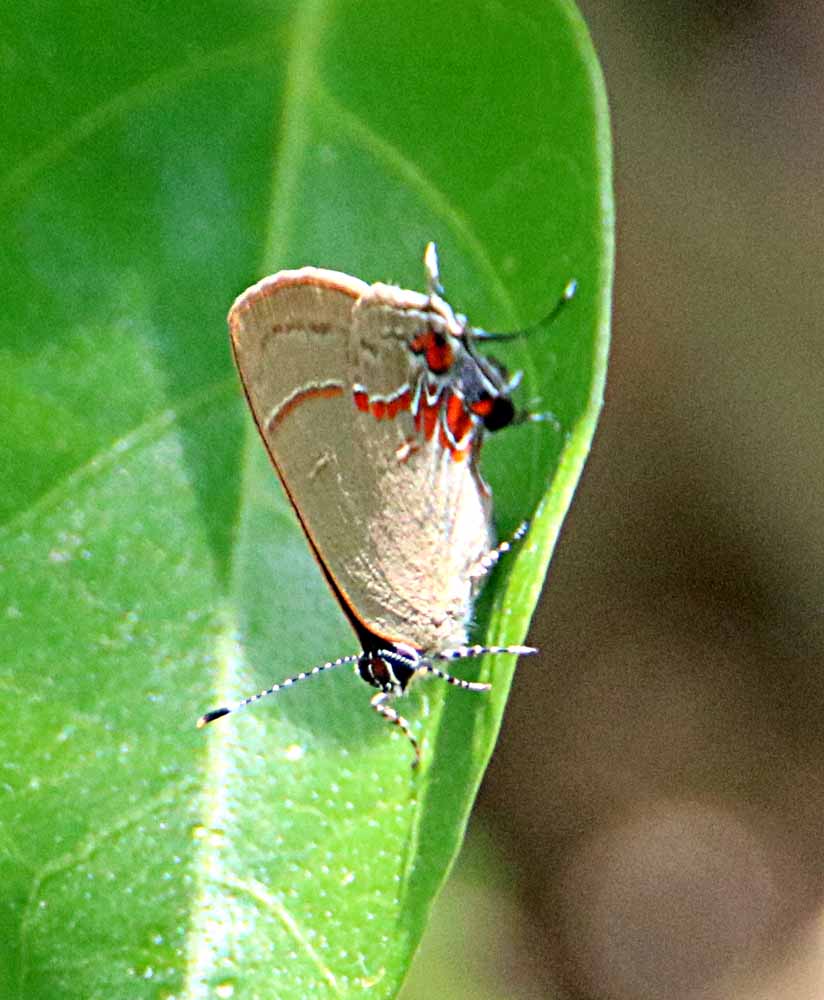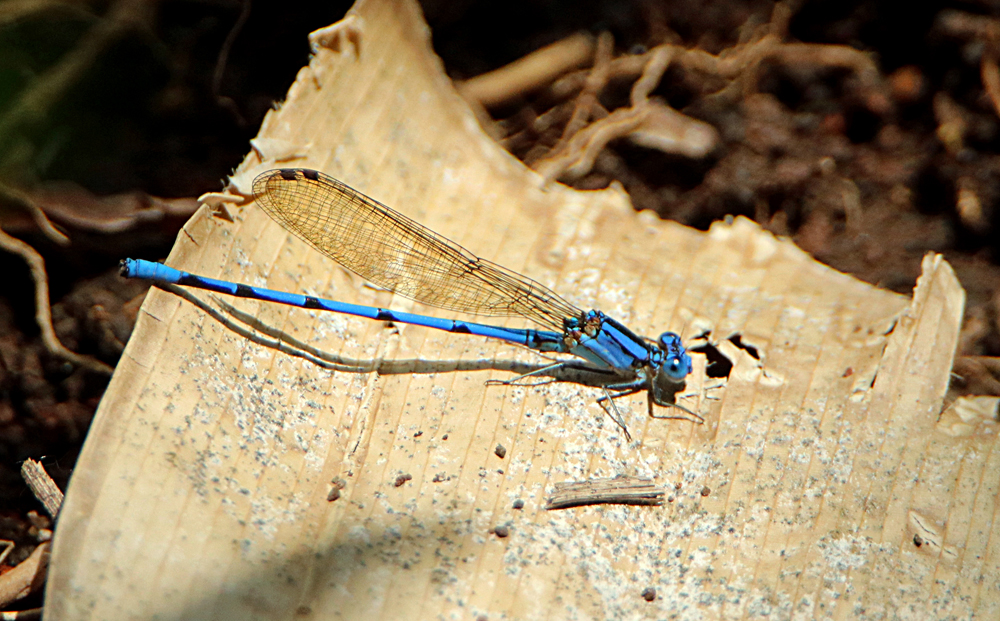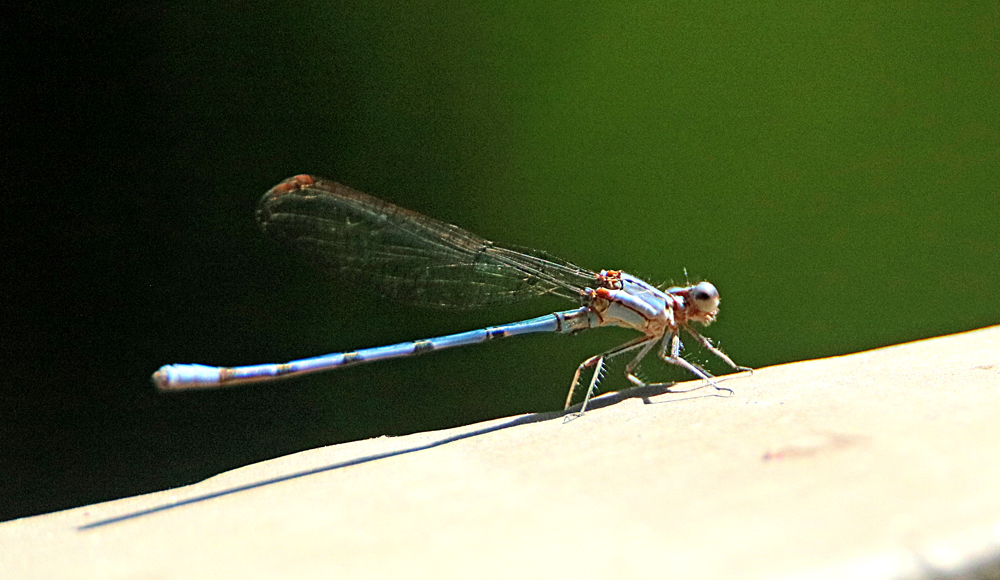The sun rises in the east behind other mountains that are behind the one that my house is on the west side of. 🙂 Simply put, I cannot see much of a sunrise from my house or terrace that faces W/NW where the vista of little mountains I often share are located. But when I am not sleeping late, I can get out on my terrace and get what I call a “reflected sunrise” on those hills in the W/NW. This past week I’ve been sleeping as late as I could to help cure my sick stomach which is now finally well! (I think!) But these two early morning “reflected sunrise” shots were made earlier in March. The feature photo at top is a panorama of three shots on my Canon 750D and this shot below for email version was a quick snap on my cheap Samsung Cellphone! 🙂
